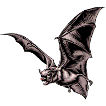Museum, University of Nebraska State

University of Nebraska State Museum: Mammalogy Papers
Document Type
Article
Date of this Version
3-1980
Citation
Prairie Naturalist (March 1980) 12(1): 9-12.
Abstract
Little has been published on the mammalian fauna of Badlands National Monument, a unique ecological area that encompasses parts of Jackson and Pennington counties in South Dakota. By way of example, although five species of bats are herein recorded from the Monument, only one has been reported previously - see Jones and Choate (1978), who listed two specimens of Myotis thysanodes pahasapensis from the Cliff Shelf area. Jones and Genoways (1976b), however, did report several other species from badland areas not far distant from the boundary of the Monument.
In 1970, under sponsorship of the Badlands Natural History Association and with the cooperation of the National Park Service, one of us (Farney) spent two months observing and collecting vertebrates at Badlands National Monument. The area was briefly visited again in mid-August of 1972. Specimens obtained during the last visit are deposited in the vertebrate collection at Kearney State College (KSC). The others are on deposit in the Museum of National History at The University of Kansas (KU).
Bats were collected at two localities in the National Monument. Most field work was done at the Cliff Shelf, 2 mi. N and 2 1/2 mi. E Interior, Jackson County, where specimens were netted or caught in a bat trap set at a small pond, which holds water for only part of the year. Several cottonwood trees at the pond were situated in the midst of an otherwise cedar-shrub association, below talus slopes of badlands scarps. At Close Spring, located 6 mi. S and 91/2 mi. W Wall, Pennington County, nets and a bat trap were set over a pool that had been plugged with vegetation. The vegetation was pulled aside or pushed down so that a 10-foot clearing was available for nets and the trap. The spring is located in a short grass-shrub association; trees around the spring consisted mostly of elm. Although we found no daytime retreats of bats within the Monument, all species undoubtedly roost in the many deep crevices and small caves in badland outcrops. All may overwinter in such places as well.


Comments
Copyright 1980, North Dakota Natural Science Society. Used by permission.